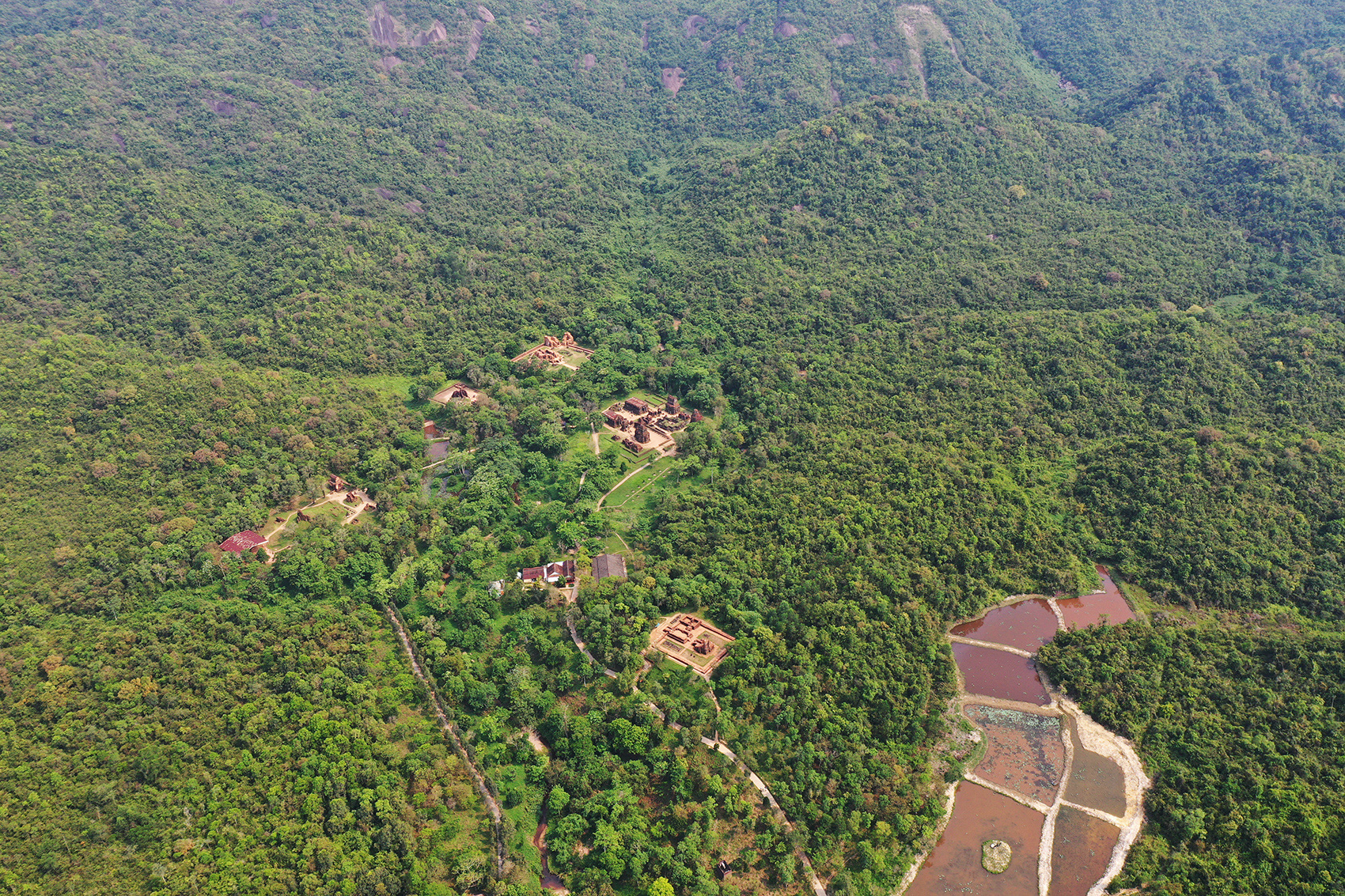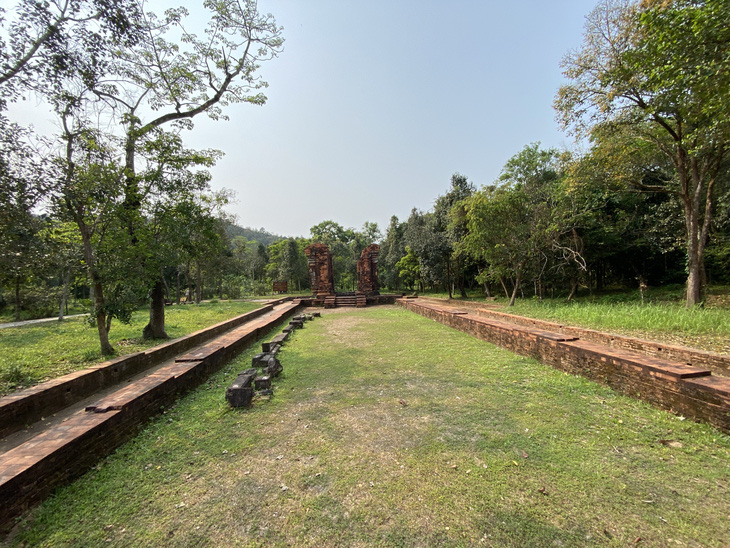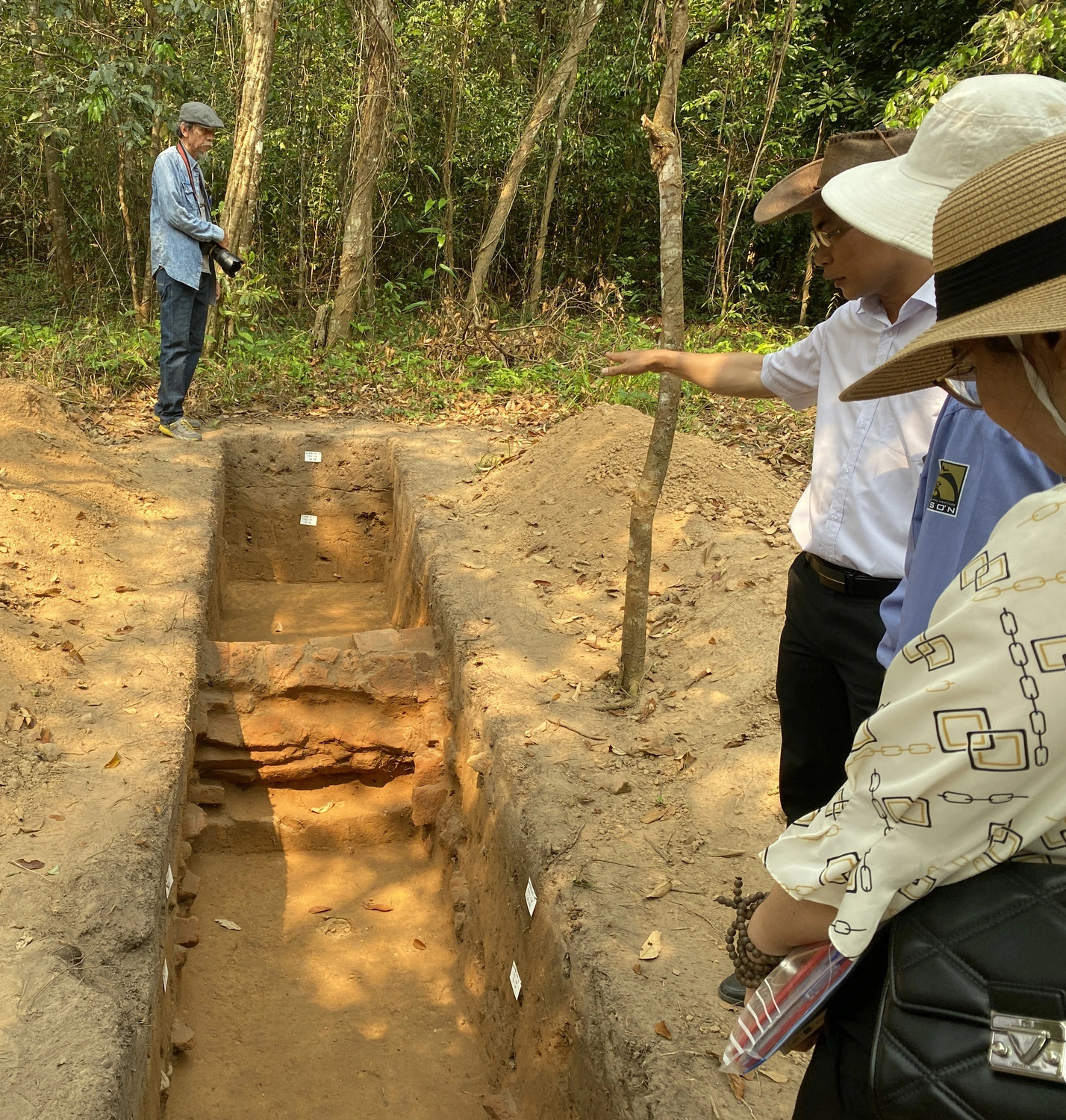The discovery, announced on Monday afternoon, is expected to enhance research efforts and enrich tours of the site.
The site includes 71 towers and temples, classified into 14 groups assigned with a letter such as A, A’, B, C, D, E, F, G, H, K, dating back to the 4th-13th centuries.
|
|
| An aerial view of My Son Sanctuary, a UNESCO World Heritage Site in Quang Nam Province, central Vietnam. Photo: B.D. / Tuoi Tre |
Previously, archeologists had excavated 220 square meters of land in the sanctuary to explore a possible ancient pathway from a K tower to the center of the site, according to the management board.
Their efforts resulted in the discovery of an architectural structure stretching 500 meters in length and nine meters in width, flanked by brick walls and believed to originate from the 12th century.
|
|
| A segment of the new path unveiled during a recent excavation at My Son Sanctuary, a UNESCO World Heritage Site in Quang Nam Province, central Vietnam. Photo: B.D. / Tuoi Tre |
This finding confirms the existence of a path connecting the K tower group to the center of My Son Sanctuary, serving as a sacred route for gods, kings, and monks.
Similar sacred paths associated with Hindu rituals have been discovered in other locations, indicating their significance in ancient religious practices.
|
|
| A segment of the new path unveiled during a recent excavation at My Son Sanctuary, a UNESCO World Heritage Site in Quang Nam Province, central Vietnam. Photo: B.D. / Tuoi Tre |
My Son Sanctuary was the religious and political capital of the Champa Kingdom (192-1832) for most of its existence.
It was recognized by UNESCO as a World Heritage Site in 1999.







